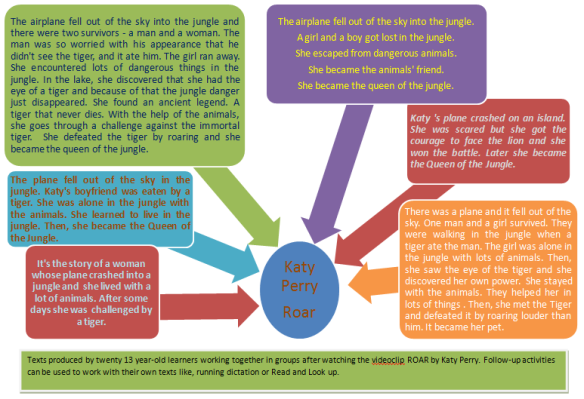Managing a group of twenty 8th graders isn’t easy, even when you are using songs, videos, games or films. You can never grab everyone’s attention at the same time nor make they do what you want them to do. Peers on the other hand can 😉 The concept of gamification in the classroom is something really close to what most boys are used to. Most of them play games and most of them were boys.
These particular students spend the whole day in school because they receive full-time education. In the morning they have the normal curriculum and exams. In the afternoon they take extra-curriculum workshops and classes (Robotics, language, etc.). They have English classes in the morning and in the afternoon. And the classes have the aim to complement each other. Our focus in the afternoon is on oral skills (listening and speaking) and there is no passing grade involved. Another interesting characteristic is that in the morning they all study together, but in the afternoon, they are split in two groups for the English lessons( I have about 13 Ss every week). It is a total of 25 students all together, some of them didn’t come last week. This week, I had 20 instead of 13 because I had to cover up for my colleague. But whether it is 13 or 20 the level of noise and difficult to grab everyone’s attention is the same. So I decided to give gamification (or sort of it) a try. Was it useful? Pretty much, I had never seen them so quiet and focused. Surprisingly, we’ve had only couple of incidents in which made the group lose a card.
I was thinking more towards “Gincana” which means teams receive a series of tasks and if they accomplish, they get points for them. The team with most points win. But I guess, they some how are similar in concept, apart from the fact that if you consider that they need to master one level until they can move to the next one, them the groups would move in a different pace. In this case, I made the call of when (setting the time, giving the instructions and rules to move to the next level, then count the points according to the activity aim). I was quite flexible with time though and how many times the video/song were played. And the whole thing ran really smoothly.
Number of students: 20
 Reflection notes after the class:
Reflection notes after the class:
1) The video with the emoticons. Students reaction to it was positive, as Eduardo Siemens mentioned in his post Ss do mentioned whatsapp, Iphone, it’s a song.
Interesting enough they were reading it without caring to listen to the song at all.
5) Each group got a copy of the completed lyrics. At this point… 5 minutes to finish the class. Each group in order to leave, they would need to listen attentively and then where I stopped they would need to complete the song by singing few lines (only one was needed to release the group from prison LOL). One team by one team, I would stop, and they would sing and leave the room.
It was definitely fun for all of us. I thought I could have given them a prize, but I’m not sure there was really a need for that. They will get the score of each team tomorrow! 😀
What motivated them to sit quietly and focus on the tasks? There were a moment or two while watching the video that a student or two that couldn’t focus. For example, one student when the lights were off, closed his eyes, then his buddy reminded him that he needed to fully participate. Another time, couple of boys played around a little bit. Most of them though were concentrated and focused in order not to lose any of their points.
HILARIOUS! After watching the official video once, one of them asked to watch it one more time. No one followed him with the request, so I decided to ask the whole group to raise their hand if they wanted to watch it again. No one did, apart from the Student who had already showed his interest in watching one more time. So, almost instantaneously the boy said, “teacher I’m going to ask in Portuguese because they surely didn’t understand.” So he did and hands started to go up. and we all laughed. lol
As for fun, it was great. The competition in the air, defending their points at all cost (even if for that they had to keep completely quiet). But what about learning? Or teaching for that matter? I mean they had opportunities to manipulate the same text over and over again, to listen, to sing, to test what they knew, to produce. What should we do after such a great sequence of tasks with a song?
Follow-up activities I’ll be using tomorrow with my group: Running Dictation and Read & Look UP (John F. Fanselow)



Just loved it!!
LikeLike
Thanks Raquel for your support. Your feedback means a lot to me.
LikeLike
What a great idea for teen learners! Thanks for sharing.
LikeLike
Thanks Anne. So glad you found it useful.
Take a look at this post Anne.
LikeLike
Great post! Thanks for the recommendation!
LikeLike
Pingback: Links for October 10, 2013 | Andrzej's Links
Pingback: Gamification | Sam Shepherd
Pingback: ‘How I learnt English’: Part II | David's ESOL Blog
Pingback: Have fun: What does that suppose to mean? | ROSE BARD – Teaching Journal